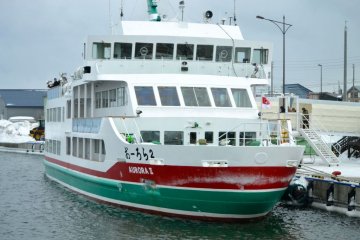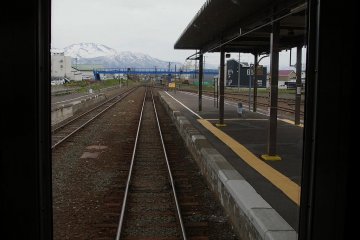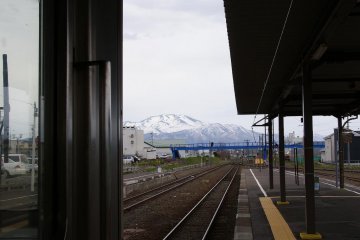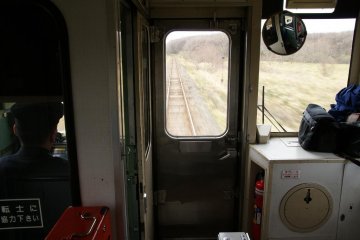One of the great aspects of train travel in Japan is that it allows you to go just about anywhere in the country. I made the decision to travel north from my home base in Kawayu-Onsen to the city of Abashiri.
The route took me into the nearby hills and the agricultural area beyond and afforded me and my fellow passengers a spectacular view of the Shiretoko Peninsula and National Park. For the majority of travelers, Shiretoko is the ultimate destination, but I had other plans.
The train traveled north as far as it could go before reaching the ocean and heading due west. With the snow-capped mountains of Shiretoko in the background we moved closer towards Abashiri. The trip only lasted 90 minutes and as we pulled into the station the weather had shifted, as it so often does along the coast, to a wet and rainy day.
After disembarking the train — and with my notes on navigating in-and-around the area in-hand, I planned to start my day. Thankfully, Abashiri has an information center that not only provides written material but also an actual person to help guide you through your day of sightseeing. Regardless of whether or not I had already researched and written down notes, I was going to take advantage of the information center and the English speaking guide. My decision proved to be a good one as I was able to receive bus schedules, walking maps, discounted tickets to local museums and most importantly — insider information. Had I not stopped to speak with the guide I would not have known that I needed to inform the city bus driver to stop at my first point of interest: Tentozan and the Abashiri Prison Museum.
Thanks to my rail tickets and the information center at the station, I was able to spend my rainy day visiting the Prison Museum, the Ainu Northern People Museum and the Abashiri River walk.
















